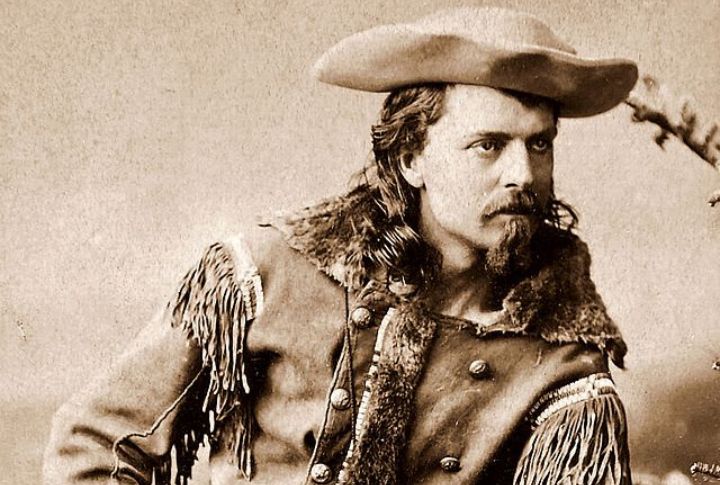
The American cowboy remains an enduring symbol of the nation’s frontier spirit, personifying resilience and independence. Through 15 carefully selected vintage pictures, we peek into the 19th and 20th centuries, exploring the lives of these ranchers. These images give us a glimpse into the lives of the cowboys who shaped the Wild West.
Salon Advertisement
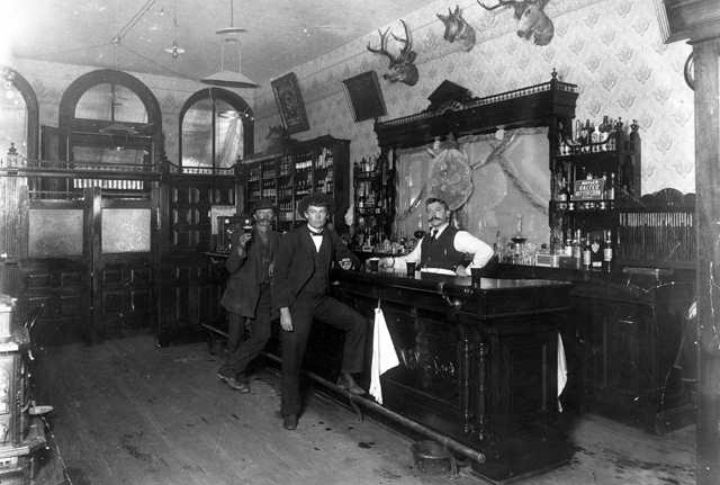
This 1890 photograph captures a typical Wild West saloon, a hub of social life on the American frontier. In the background, Milwaukee Brewing, Schlitz, Blatz, and Budweiser advertisements highlight the early days of brewery marketing. Saloons like this served as gathering places for cowboys, ranchers, and travelers alike, offering drinks and entertainment.
Jacob Summerlin Jr.
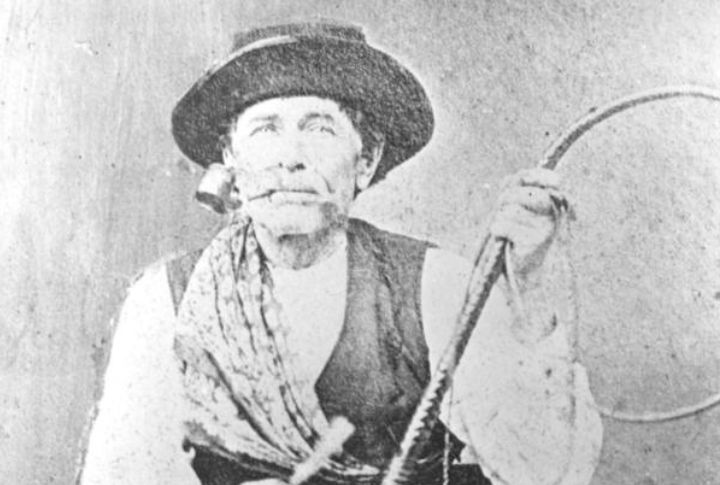
This photograph features Jacob Summerlin Jr., known as the “King of the Crackers,” a pivotal figure in early Florida cowboy culture. Born in 1820, Summerlin was one of the first white settlers to raise large cattle herds in Florida. This picture captures him holding a branding iron symbolic of his cattle empire. Summerlin’s legacy includes donating land for public use, helping to establish Orlando and Bartow’s infrastructure, and shaping Florida’s cattle industry.
The Big Die-Up
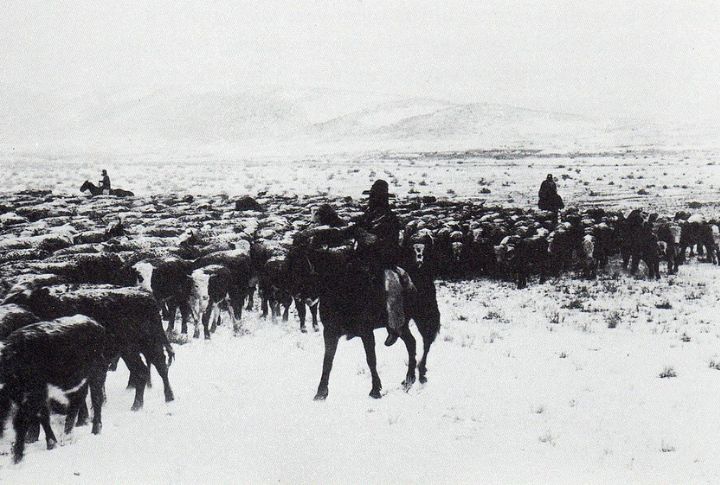
This photograph shows cowboys herding cattle during the infamous “Big Die-Up” of 1886-1887. During that period, extreme cold and heavy snowfall decimated cattle herds. Ranchers, including future president Theodore Roosevelt, faced losses as livestock perished by the thousands. This image captures the resilience of cowboys during one of the darkest chapters of the cattle industry.
Nat Love

This photograph shows Nat Love, an iconic African American cowboy of the late 19th century. Born into slavery in Tennessee in 1854, Love gained his freedom after the Civil War and ventured westward, becoming renowned for his exceptional skills in roping and marksmanship. In 1876, he earned the moniker “Deadwood Dick” after winning a roping contest in Deadwood, South Dakota.
Buffalo Bill and Sitting Bull
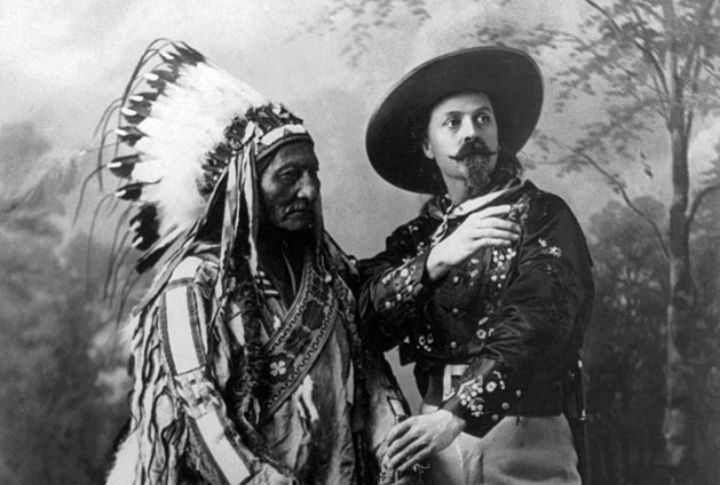
This iconic 1885 photograph captures William F. Cody, aka Buffalo Bill, and Sitting Bull. Buffalo Bill, famed for his Wild West show, brought frontier life to audiences worldwide. Sitting Bull was the Lakota leader best known for his role at the Battle of Little Bighorn. This picture, taken during their brief collaboration, symbolizes the merging of myth and reality through storytelling.
Bob Leavitt’s Salon
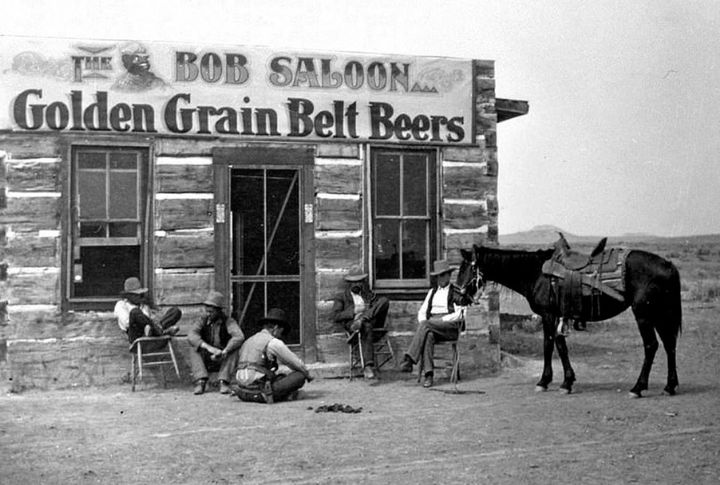
This photograph captures Bob Leavitt’s salon in Jordan, Montana, a hub of cowboy life during the late 19th and early 20th centuries. Bob Leavitt was a notable figure in the frontier town, running this establishment as a gathering spot for cowboys, ranchers, and drifters. The log cowboy salon epitomizes the rugged charm of the time, where cowboys would exchange tales, share drinks, and unwind after a long day.
Cowboys Herding Cattle
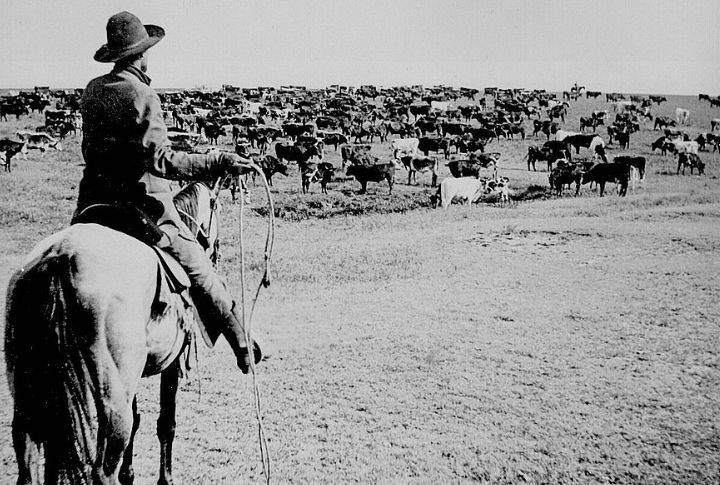
This photograph captures three cowboys on horseback, accompanied by a supply wagon, during a cattle roundup. It was taken in the 1880s by R.M. Davis along the Denver and Rio Grande Railway. Scenes like this were commonplace during the heyday of cattle drives, as cowboys herded vast numbers of cattle across rugged terrain.
Dodge City Cowboy Band
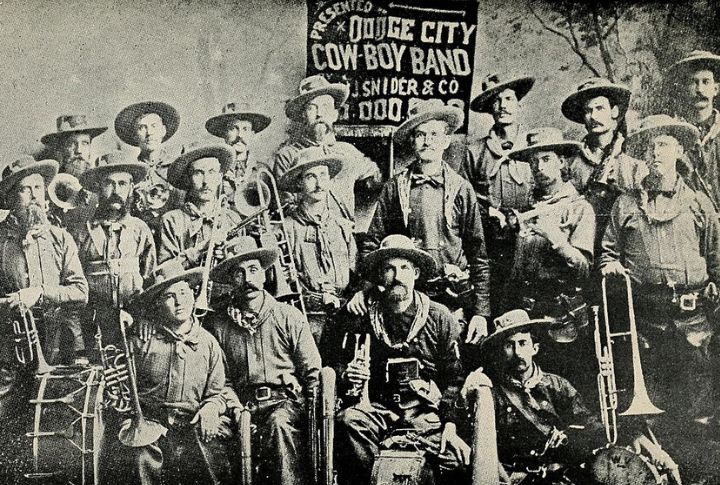
This photograph showcases the Dodge City Cowboy Band, active from 1884 to 1888 under leader Chalk Beeson. Clad in Wild West attire, they performed across the country, including at Chicago’s 1884 Republican National Convention. Today, they are remembered for being one of the first cowboy bands in America and showing the multitalented nature of cowboys.
Roping Gray Wolf
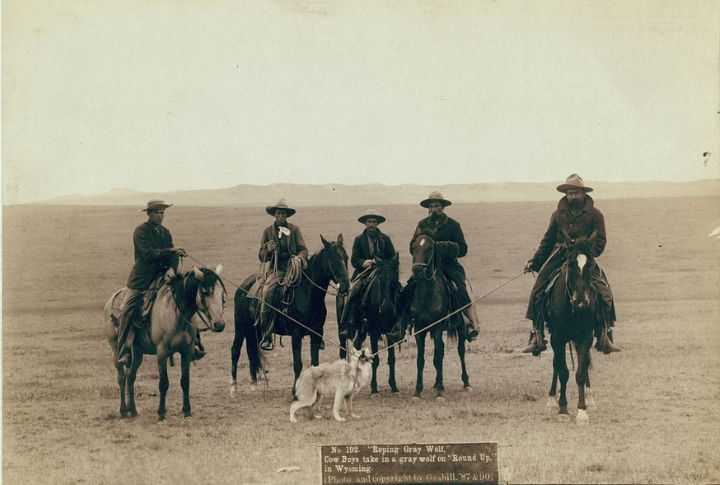
This striking image, titled “Roping Gray Wolf,” was taken in Wyoming in the late 19th century. It depicts cowboys capturing a wolf during a cattle roundup. Wolves posed a significant threat to livestock, so cowboys and ranchers had to hunt them. This photograph shows the skills cowboys had to develop, including cattle herding and predator control.
Cowboy Outfit
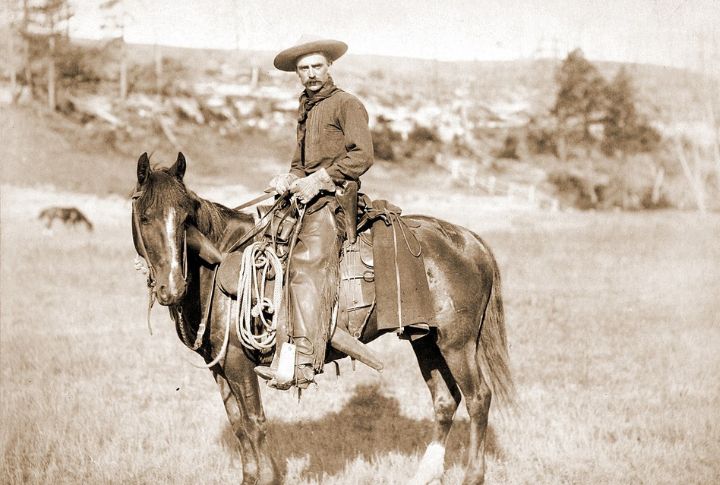
This 1888 photograph, taken by John C. H. Grabill, features a cowboy on horseback in the open plains of Dakota Territory. Grabill’s photography captured cowboys’ everyday lives, from cattle drives to moments of solitude. This image immortalizes the American cowboy’s practical attire, including a wide-brimmed hat, bandana and chaps.
Branding Cattle in South Dakota
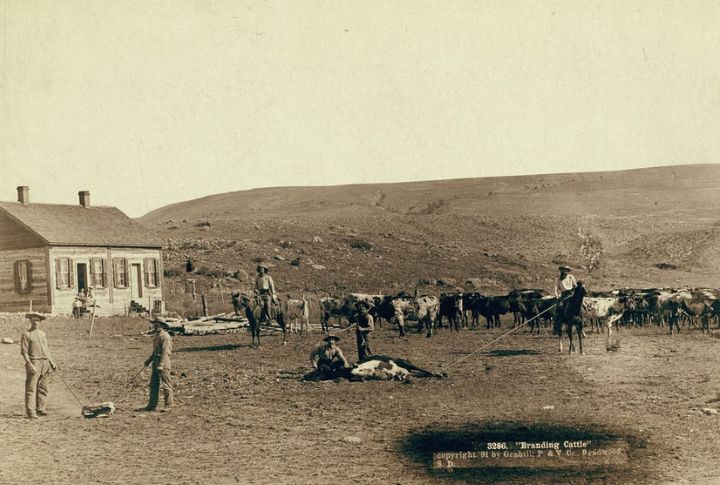
This 1891 photograph, taken by John Grabhill near Deadwood, South Dakota, captures cowboys branding cattle. Branding was essential to cattle ranching in the West, where vast open ranges made cattle identification crucial to avoid disputes. Today, branding remains a tradition in some farms, though modern methods like ear tags have replaced the practice.
Cowboys Cheer Roosevelt
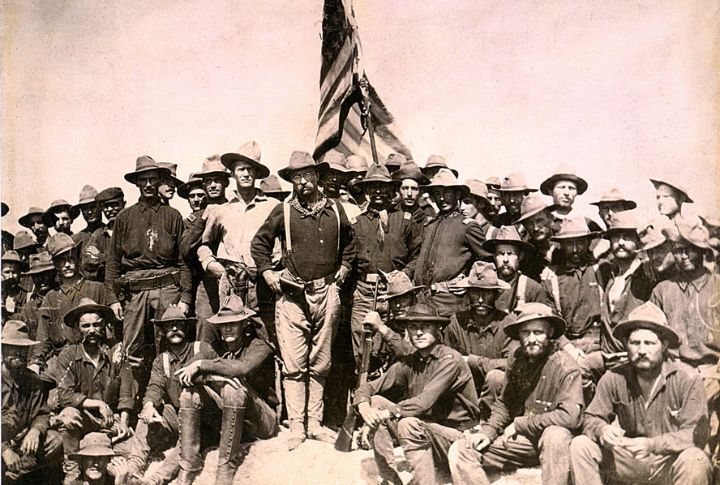
This 1903 photograph captures cowboys in Hugo, Colorado, chasing and cheering President Theodore Roosevelt’s train during his nationwide tour. Roosevelt, a rancher and cowboy at heart, earned respect among Westerners for his former ranch ownership and conservation advocacy. This image highlights the camaraderie between the president and the cowboy community.
Black Cowboys at a Fair
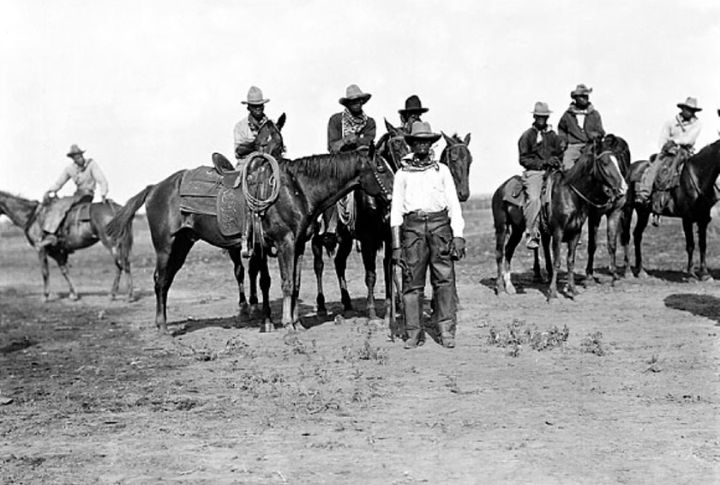
This 1913 photograph captures a group of Black cowboys at the Negro State Fair in Bonham, Texas. Black cowboys, who made up an estimated 25% of the cowboy workforce, were integral to ranching in America. Today, images like this are a reminder of the role Black cowboys played in the cattle industry.
Lucille Mulhall Breaking Gender Barriers
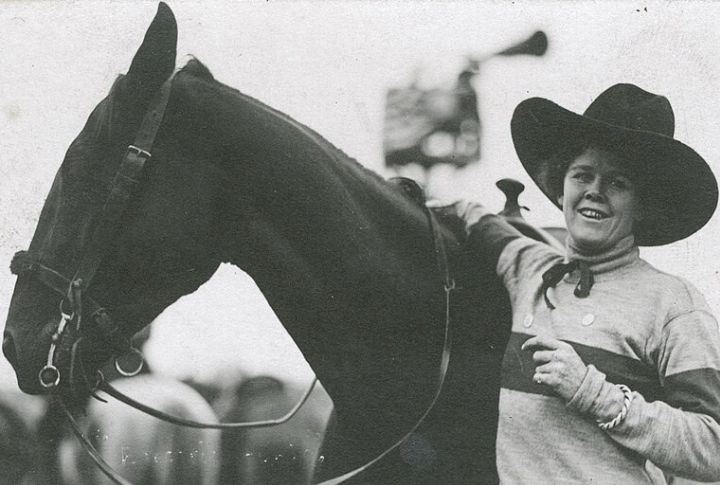
This 1913 photograph shows Lucille Mulhall at the Winnipeg Stampede, where she demonstrated her steer roping skills. Known as the “Queen of the Western Prairie,” Mulhall was a trailblazer in rodeo and one of the first female cowgirls to gain international fame. She remains celebrated as a pioneer in women’s rodeo.
Tucumcari Round-Up
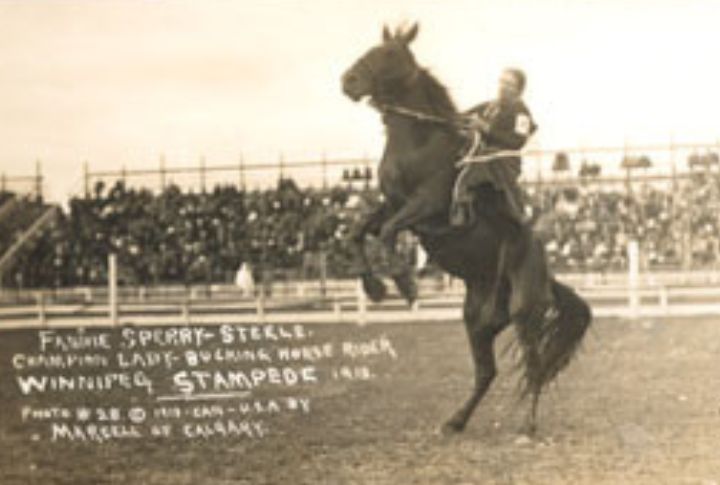
This 1913 photograph captured by Ruth Roach, a world-champion rodeo cowgirl, shows Slim Riley at the Tucumcari Round-Up in New Mexico. The Round-Up was an annual event celebrating the cowboy lifestyle, featuring bronco riding, steer roping, and ranching competitions. Riley’s high-flying ride shows the level of showmanship that attracted crowds to these legendary events.

